Today Current Affairs: 14th July 2022 for UPSC IAS exams, State PSC exams, SSC CGL, State SSC, RRB, Railways, Banking Exam & IBPS, etc
Table of Contents
James Webb Space Telescope:
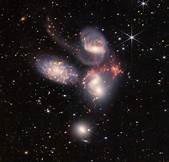
NASA unveiled images from the James Webb Space Telescope, the largest and most powerful orbital observatory ever launched.
- The pictures, designed to peer farther than before with greater clarity to the dawn of the universe, were hailed by NASA as milestone marking a new era of astronomical exploration.
- Nearly two decades in the making, the $9 billion infrared telescope was launched on December 25, 2021. It reached its destination in solar orbit nearly 1 million miles from Earth a month later.
- The crowning debut image was a “deep field” photo of a distant galaxy cluster, SMACS 0723, revealing the most detailed glimpse of the early universe recorded to date.
- Among the other Webb subjects were two enormous clouds of gas and dust blasted into space by stellar explosions to form incubators for new stars — the Carina Nebula and the Southern Ring Nebula, each thousands of light years away from Earth.
- The collection also included fresh images of another galaxy cluster known as Stephan’s Quintet, first discovered in 1877.
LUX-ZEPLIN (LZ):

As of today, the most sensitive dark matter detector experiment in the world is LUX-ZEPLIN (LZ) in South Dakota in the U.S.
- Many physicists strongly believe that the entire visible part of the universe forms only 5% of all matter in it.
- They believe the rest is made up of dark matter and dark energy.
- Dark matter is made up of particles that do not have a charge. So, these particles are “dark”, namely because they do not emit light, which is an electromagnetic phenomenon, and “matter” because they possess mass like normal matter and interact through gravity.
- There is strong indirect evidence for dark matter, and this evidence is reflected at various levels (or distance scales, as physicists would explain).
World Population Report:
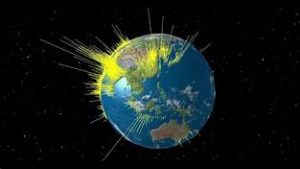
India is set to surpass China as the world’s most populous country in 2023, with each counting more than 1.4 billion residents this year, a United Nations report said, warning that high fertility would challenge economic growth.
- The world’s population, estimated to reach 8 billion by November 15 this year, could grow to 8.5 billion in 2030, and 10.4 billion in 2100, as the pace of mortality slows, said the report released on World Population Day.
- India’s population was 1.21 billion in 2011, according to the domestic census, which is conducted once a decade.
- The government had deferred the 2021 census due to the pandemic.
- The world’s population was growing at its slowest pace since 1950, having fallen below 1% in 2020, UN estimates showed.
- In 2021, the average fertility of the world’s population stood at 2.3 births per woman over a lifetime, having fallen from about 5 births in 1950.
- The UN said more than half of the projected increase in the global population up to 2050 will be concentrated in eight countries — Congo, Egypt, Ethiopia, India, Nigeria, Pakistan, the Philippines and the United Republic of Tanzania.
The Impact Of Inflation On India’s Poor:
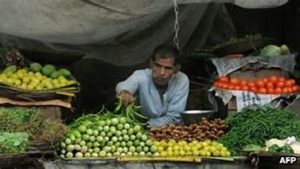
The impact of inflation on India’s poor would be negligible as per a United Nations Development Programme report on ‘Addressing the Cost of Living Crisis in Developing Countries’, which also looked at the ripple effects of the Russia-Ukraine war such as energy and food market disruptions.
- While soaring food and energy prices could push up to 71 million people around the world into poverty, the UNDP said in the report that the chances of those in India earning $1.9 a day slipping into poverty due to this upturn would be zero, while the impact would be a mere 0.02% and 0.04% if a poverty line of $3.30 or $5.50 a day was assumed, respectively.
- A recent comparative assessment of price and income support measures shows that targeted transfers helps poorer households cope with price spikes.
Government Initiatives:
- India’s ‘well-tailored’ programmes carried out over the past two years to support people and ensure they don’t run the risk of slipping into poverty seemed to have made an impact.
- The Centre has allocated more than 1,000 lakh tonnes of foodgrains from April 2020 till September this year, over and above the food security quota and had provided support of ₹1,500 to 20 crore women Jan Dhan account holders in the first three months of the pandemic.
Sovereign Wealth Funds (SWF):

High Crude Oil prices have been advantageous for the countries to invest through their Sovereign wealth funds.
- Six of the top 10 countries by SWFs are oil-rich economies.
- A sovereign wealth fund is a state-owned investment fund comprised of the money generated by the government, often derived from a country’s surplus reserves.
- Use: Oil-rich countries such as Norway, those in West Asia, and others such as China use SWFs to invest in businesses, both at home and abroad.
- There are 169 SWFs from 49 countries managing $11.5 trillion of assets in July 2022.
- A common underpinning of most major SWFs is a surplus in the current account. E.g. Kuwait’s current account balance was about 21% of GDP in 2021 (India’s is 1.1% of its GDP)
New Insights Involved In The Movement Of The Earth’s Tectonic Plates:
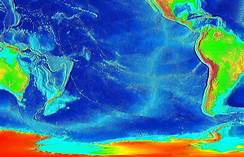
A recent study by a team of scientists at Goa-based National Centre for Polar and Ocean Research (NCPOR) has brought new insights into the critical processes involved in the movement of the earth’s tectonic plates.
- The buoyant rising of hot and low-density magma or plumes from the Earth’s interior towards the surface leads to extensive volcanism and the creation of seamounts and volcanic chains above the ocean floor.
- However, many times, the magma’s buoyant force is not sufficient to pierce through the lithosphere.
- In such cases, plumes tend to dump the material at sub-lithospheric depths.
- When the tectonic plates that lie over the lithosphere move, they tend to drag the ponded materials along with them.
- A fundamental question that remains outstanding in understanding earth’s processes is how far a tectonic plate can drag the plume material at its base after its initial impact with the plume.
- Scientists studied samples of igneous rocks collected from near the Ninety East Ridge in the Indian Ocean during an expedition under the International Ocean Discovery Program (IODP).
- The Ninety East Ridge is an aseismic ridge located almost parallel to 90 degrees east longitude in the Indian Ocean. It is approximately 5,000 km in length and has an average width of 200 km.
- Igneous rock, or magmatic rock, is one of the three main rock types, the others being sedimentary and metamorphic.
- It is formed through the cooling and solidification of magma or lava.
- Investigation revealed that some basaltic samples were highly alkaline and had very similar composition to those released by the Kerguelen hotspot (volcanic hotspot at the Kerguelen Plateau in the Southern Indian Ocean).
- In addition, the minimum age of alkaline samples was about 58 million years, much younger than the adjacent oceanic crust surrounding Ninety East Ridge (around 82-78 million years old)
- This study proposes that the Indian Tectonic Plate, which was contemporaneously moving northward at a very high speed, had dragged a considerable amount of Kerguelen plume material for more than 2,000 km underneath the Indian lithosphere.
- Subsequent reactivation of deep fractures may have triggered decompression melting of the underlying plume material and emplaced as magmatic sills and lava flows near the Nighty East Region around 58 million years ago.
Youth In India 2022 Report:
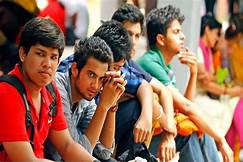
The Ministry of Statistics and Programme Implementation (MoSPI) has released ‘Youth in India 2022’ Report, which shows that the population share of the youth is starting to decline whereas the share of the elderly is expected to increase during 2021-2036.
- A sustained drop in fertility has led to an increased concentration of the population at working ages (between 25 and 64 years) and this shift in the age distribution provides a time-bound opportunity for accelerated economic growth known as the “Demographic Dividend”.
Findings of the Report:
- Decline in Youth Population: The youth population is expected to increase initially but will start to decline in the latter half of 2011-2036 period.
- The total youth population increased from 222.7 million in 1991 to 333.4 million in 2011 and is projected to reach 371.4 million by 2021 and, thereafter, decrease to 345.5 million by 2036.
- Proportion of Youth and Elderly Population: Proportion of youth to the total population had increased from 26.6% in 1991 to 27.9% in 2016 and then projected to start a downward trend and to reach 22.7 % by year 2036.
- On the contrary, the proportion of elderly population to the total population has increased from 6.8% in 1991 to 9.2% in 2016 and is projected to reach 14.9% in 2036.
- Scenario in the States: States such as Kerala, Tamil Nadu and Himachal Pradesh are projected to see a higher elderly population than the youth by 2036.
- Bihar and Uttar Pradesh experienced a rise in proportion of youth population to total population till 2021 and then it is expected to start declining.
- These two states, along with Maharashtra, Madhya Pradesh and Rajasthan, are projected to have over half (52%) of the country’s youth.
Sri Lanka’s Crisis:
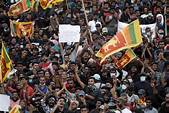
Sri Lanka, a country of 22 million people, is under the grip of an unprecedented economic turmoil, the worst in seven decades, leaving millions struggling to buy food, medicine, fuel and other essentials.
- Following the political and economic instability, hundreds of anti-government protesters stormed into the Sri Lankan President’s residence demanding his resignation.
- When Sri Lanka emerged from a 26-year long civil war in 2009, its post-war GDP growth was reasonably high at 8-9% per annum till 2012.
- However, its average GDP growth rate almost halved after 2013 as global commodity prices fell, exports slowed down and imports rose.
- Sri Lanka’s budget deficits were high during the war and the global financial crisis of 2008 drained its forex reserves which led to the country borrowing a USD2.6 billion loan from the IMF in 2009.
- It again approached the IMF in 2016 for another USD1.5 billion loan, however the conditionalities of the IMF further deteriorated Sri Lanka’s economic health.
- The Easter bomb blasts of April 2019 in churches in Colombo resulting in 253 casualties, consequently, dropped the number of tourists sharply leading to a decline in foreign exchange reserves.
- The newly led government by Gotabaya Rajapaksa in 2019 promised lower tax rates and wide-ranging SoPs for farmers during their campaign.
- The quick implementation of these ill-advised promises further exacerbated the problem.
- The Covid-19 pandemic in 2020 made the bad situation worse –
- Exports of tea, rubber, spices and garments suffered.
- Tourism arrivals and revenues fell further
- Due to a rise in government expenditures, the fiscal deficit exceeded 10% in 2020-21, and the debt to GDP ratio rose from 94% in 2019 to 119% in 2021.
- The Crisis in Sri Lanka is triggered due to a shortage of foreign exchange (forex) reserves, which have dropped by 70% over the last two years to just USD 2 billion by the end of February 2022.
- Meanwhile, the country has foreign debt obligations of about USD 7 billion for 2022.
- Sudden Move to Organic Farming: In 2021, all fertiliser imports were completely banned and it was declared that Sri Lanka would become a 100% organic farming nation overnight.
- This overnight shift to organic fertilisers heavily impacted food production.
- Consequently, the Sri Lankan President declared an economic emergency to contain rising food prices, a depreciating currency, and rapidly depleting forex reserves.
Child Labour:

The Centre does not have any data on child labour in the country and a reason for this is the drying up of budgetary provisions meant for the National Child Labour Project (NCLP), which had been monitoring the issue for about three decades.
- Since the NCLP was merged with the Samagra Shiksha Abhiyan in 2016, the labour Ministry has no records of child labour.
- The currently available data is of the 2011 Census, which says the country has more than a million child labourers.
Education Ministry also does not have a mechanism to find out the number of children engaged in child labour. - Though India has a legislation, the Child Labour (Prohibition and Regulation) Act, since 1986 the menace of child labour is continue unchecked.




